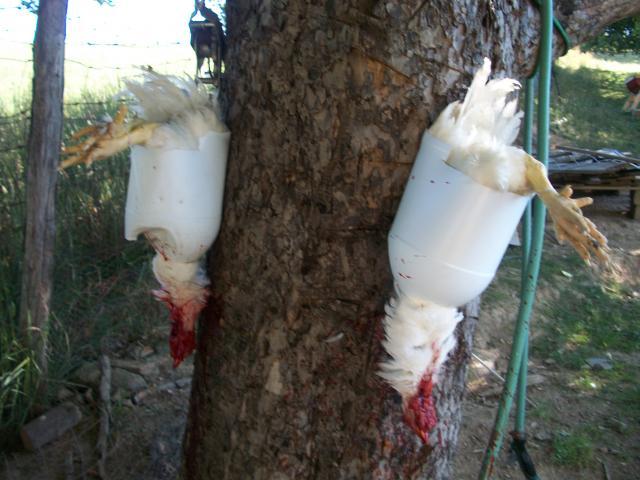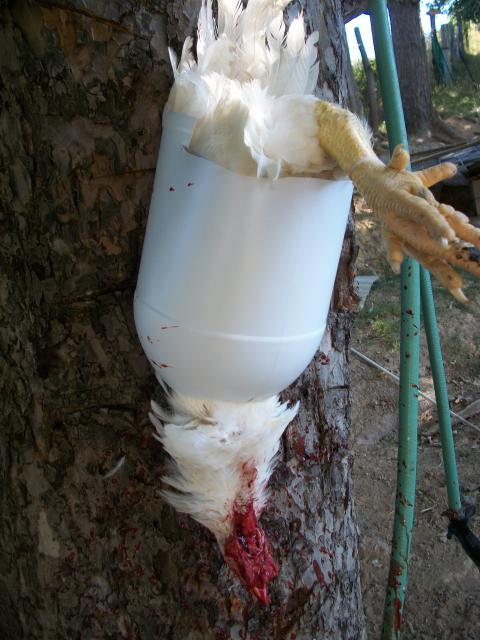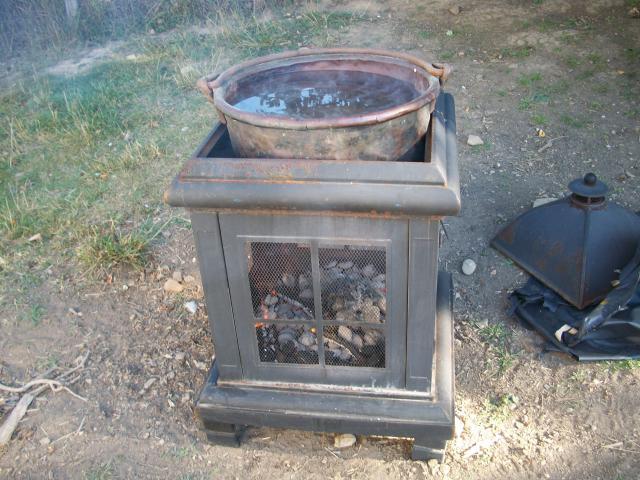Farmfresh
City Biddy
They were bigger than most of MY meaties. I start processing them when they achieve 4 to 5 pounds live weight. I also cut mine up as I clean them, so unless I have specifically raised them as a roaster they are all in pieces when I am finished.
Your end product is EXTREMELY nice looking. You should be proud.
Things non-chicken people should take note of:
Nice skin color through out the whole carcass - results of plenty of sunshine.
Good bone - plenty of exercise
HEALTHY skin on the breast meat - Factory farmed chickens often have giant breast blisters as a result of sleeping in ammonia laden, poo coated litter. Interesting how "Boneless Skinless Chicken Breast" is a premium meat item that was developed to allow the removal of bruised, blistered breast skin and the trimming away of the often green meat that results from a breast blister.
Also notice that the keel bone (which is the bone that passes through the middle of the breast) is straight and the whole skeleton of the birds is straight. Commercially raised chicken often sport contorted skeletons. Since you buy them cut up in a package you don't notice that.
I wish you also had a picture of the carcass rolled over. I am sure you would see nice normal hocks (the end of the drumstick). Many in the store are either missing their hocks or are reddened from hock burns again the result of living in filth. Also the joints of commercially raised birds are often enlarged and swollen.
Plus I will wager that the same water that was used to cool them and rinse them "clean" was NOT used to also rinse a thousand other birds.
If people only took the time to KNOW what goes on they would never consume commercially processed meats again.
Again hats off to you Bee on a job well done!
Your end product is EXTREMELY nice looking. You should be proud.
Things non-chicken people should take note of:
Nice skin color through out the whole carcass - results of plenty of sunshine.
Good bone - plenty of exercise
HEALTHY skin on the breast meat - Factory farmed chickens often have giant breast blisters as a result of sleeping in ammonia laden, poo coated litter. Interesting how "Boneless Skinless Chicken Breast" is a premium meat item that was developed to allow the removal of bruised, blistered breast skin and the trimming away of the often green meat that results from a breast blister.
Also notice that the keel bone (which is the bone that passes through the middle of the breast) is straight and the whole skeleton of the birds is straight. Commercially raised chicken often sport contorted skeletons. Since you buy them cut up in a package you don't notice that.
I wish you also had a picture of the carcass rolled over. I am sure you would see nice normal hocks (the end of the drumstick). Many in the store are either missing their hocks or are reddened from hock burns again the result of living in filth. Also the joints of commercially raised birds are often enlarged and swollen.
Plus I will wager that the same water that was used to cool them and rinse them "clean" was NOT used to also rinse a thousand other birds.
If people only took the time to KNOW what goes on they would never consume commercially processed meats again.
Again hats off to you Bee on a job well done!







 I have many pics of the internal organs and such to download when I have the time. I took them to include in my book as I figured folks would like to know what they are looking at when they get in there.
I have many pics of the internal organs and such to download when I have the time. I took them to include in my book as I figured folks would like to know what they are looking at when they get in there.